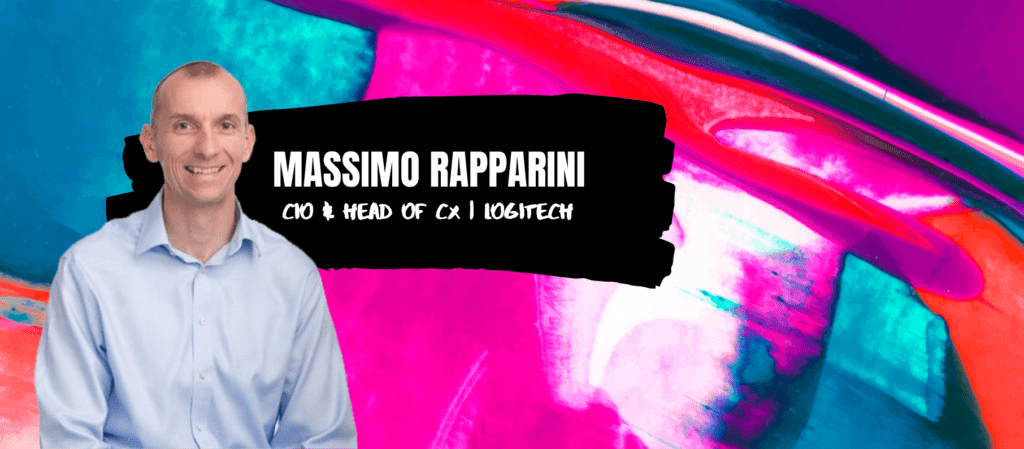At Zendesk Showcase – San Francisco, Massimo Rapparini, CIO and Head of CX at Logitech, spoke about creating compelling customer experiences for both B2B and B2C customers. Though best known as a B2C company and global leader of laptop and PC peripherals including mice and keyboards, Rapparini explains how important it is to differentiate the two types of customers, as well as how to scale and adhere to how customers are seeking support in each segment.
“We’ve seen tremendous growth in our video collaboration business and in our gaming business, and those cohorts are of pretty high volume,” said Rapparini. “One of the things we realized is when you’re talking to an IT manager [as] an enterprise who’s actually bought these video collaboration products, for example, it doesn’t really make sense to provide them with an experience as if they were calling about a mouse or keyboard or some speaker that’s broken.”
“We wanted to be able to provide something that’s completely different, and I think it’s obvious [that] we’re hoping to not only innovate and create better experiences in these areas, but also, overall, enhance the augmentation of the brand and consider how people really feel about [business] PC products versus a consumer type of product.”
Creating Compelling Customer Experiences for B2B
For Rapparini, the differentiation matters, as their enterprise video collaboration or conferencing business, including small cameras for conference rooms, is currently its fastest growing market, growing 40 to 45 to 50% over the last three years. With it eventually comprising a fifth of overall business (20.96%), with gaming headsets and related products coming in at a close second (20.03%), they needed a way to scale – and the answer for them wasn’t adding more agents. It was adapting to how these customers are seeking support for their products.
“The challenge here when thinking about scale is not so much, ‘OK, let’s try to build more agents answering phone lines,’” Rapparini said. “We also had to think about how technology could help us in that way. How do we create more value out of digital content?”
“The content, itself, people can self-serve. But I think today, if you’re looking for help on a G509 gaming headset, for example, you’re certainly not going to first pick up the phone [to contact support]. First thing you’ll do is pick up the phone to search Google or maybe go on YouTube and look for a tutorial on how to set it up.”
“That’s the path we want to go down with customer support,” he added.
Learn more: How Logitech’s subsidiary, Ultimate Ears, enhanced their in-store and follow up experience with automation
How Upcoming Generations Drive CX Architecture
When looking at their overall business model, Rapparini said going down this adhesive path was essential for them to succeed. “In terms of our long-term view of the company, we wanted to become a sustained value creator, meaning, we’re one of the companies that will continuously show at least 5% growth year-over-year for a longer period, more than 10 or 20 years,” he said. “There’s a statistic that says less than 10% of the companies worldwide have shown they’ve been able to do this in the last three years.”
“So, we’re hoping to be in that niche kind of a family. But if you translate that to CX, specifically, you shouldn’t assume that we’re going to hit a couple of milestones and then we’re done, as it were 10, 15, 20 years ago when you could set up a CX product and expect it to serve you adequately over the next several years. The reality is the modern demographics are changing.”
“So millennials, Gen Z – as they’ll have the most spending power of any generation, millennials specifically – we’ve actually been looking at the way they have and are influencing buying power, the way they’re actually looking for products, the way they rely on social channels. Another thing to consider is that they pace with technology – meaning that they’re also a reason why we’ve had to develop new ways of dealing with customers and focus on creating compelling customer experiences.”
Keeping a Competitive Edge With CX and Automation, AI
For Logitech, it’s all about keeping up with the markets and staying competitive, which is why they use support tools like Zendesk and enhance their support workflows with an automation platform.
“And so for us to be able to handle the types of cohorts and the different ways of communicating with them, that’s really something that we’re looking to use Zendesk for, because at the end of the day, we also have a set of other systems that, when you look at the journey we’re trying to build – let’s say you’re a customer, you’ve purchased a product from us online or at a retailer. Maybe, you’re trying to fit the product to your needs, or you have issues and want to file a warranty claim. All these pieces, especially together, means we need to build a cohesive yet fluent infrastructure behind our system, as well,” Rapparini said.
“So, in looking at these kinds of technologies … that’s really where we assume things will need to evolve. We need to look at how the market is changing and we hope to do that with these new tools available to us,” he concluded.
